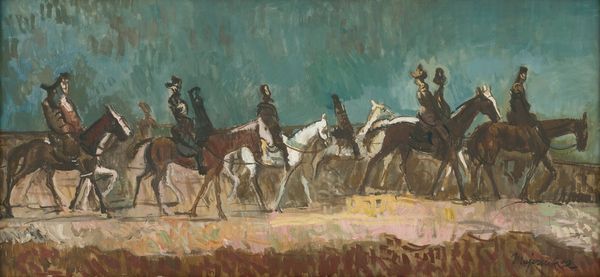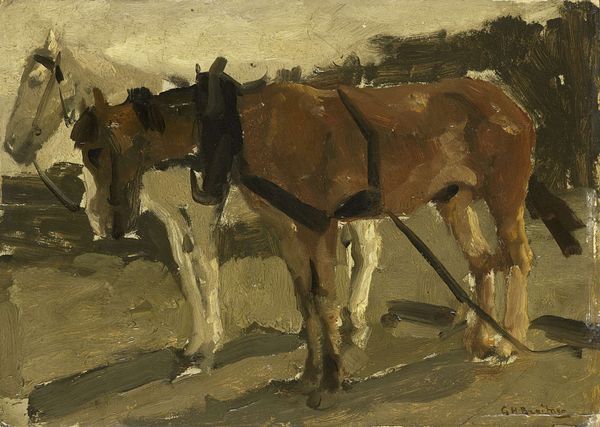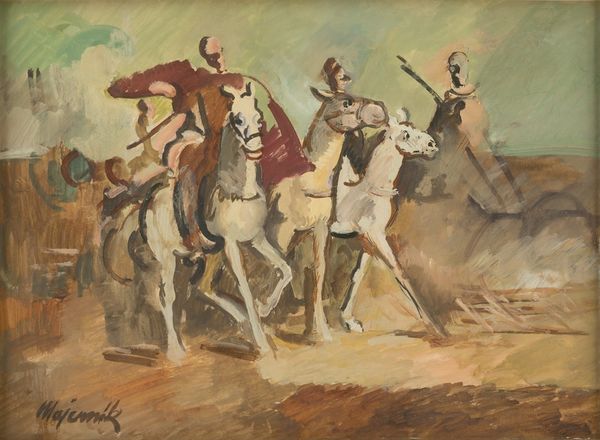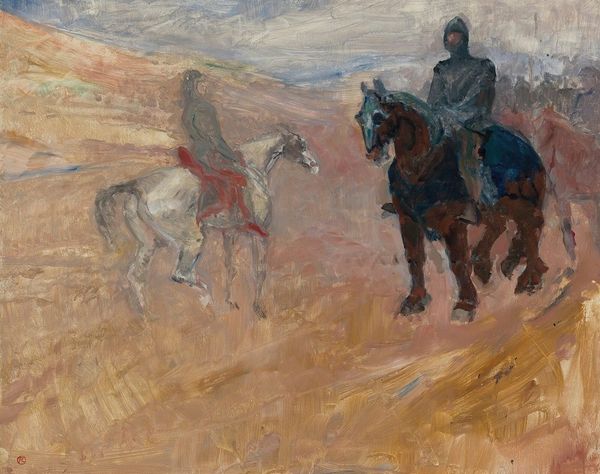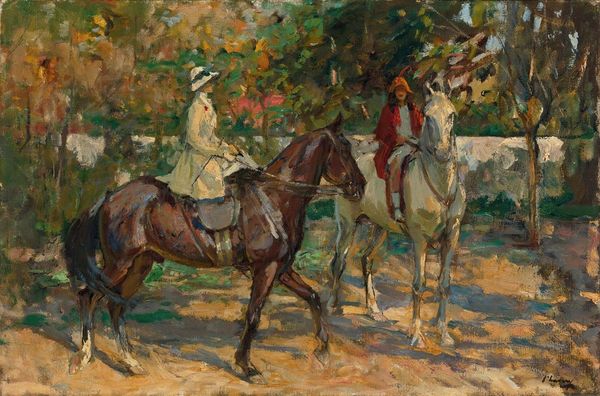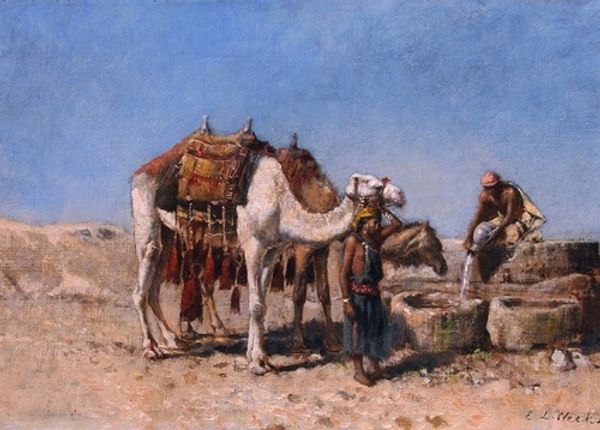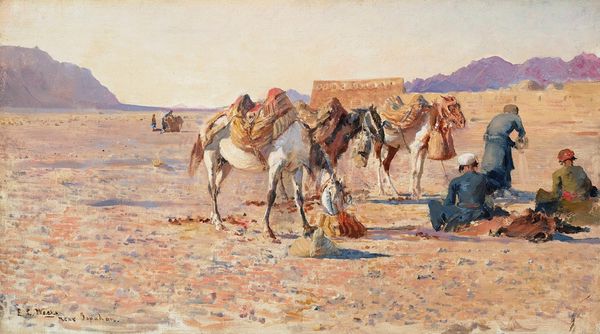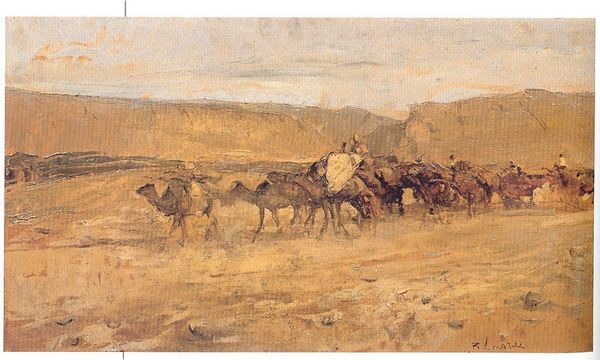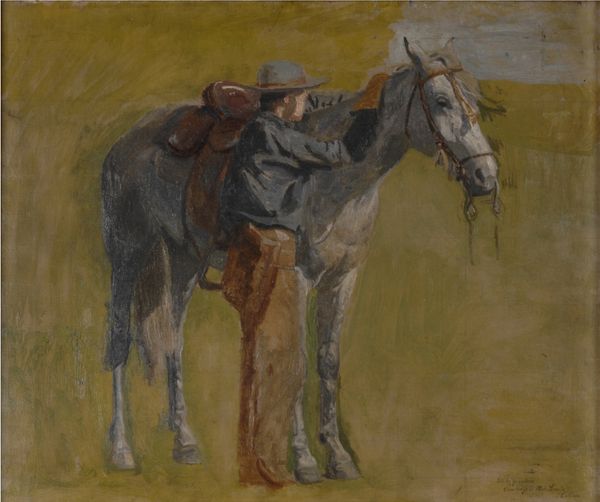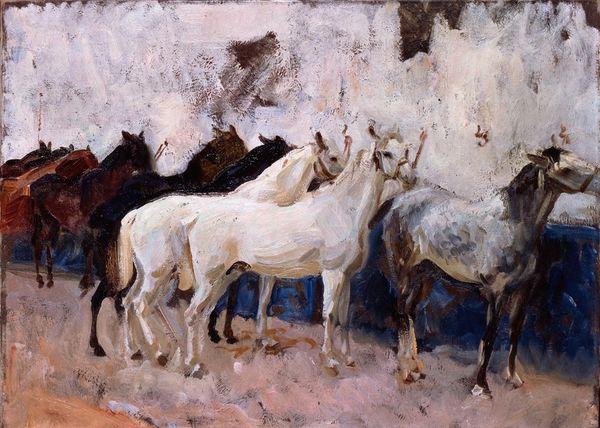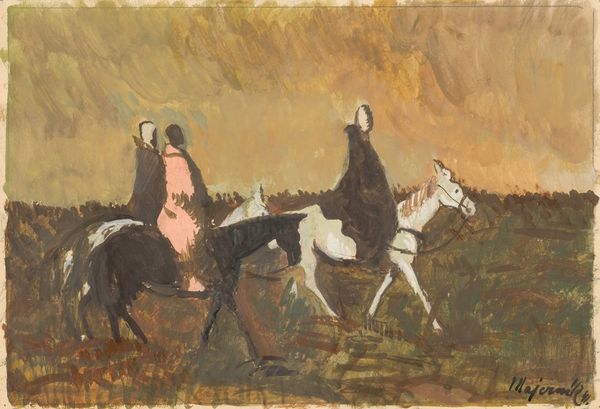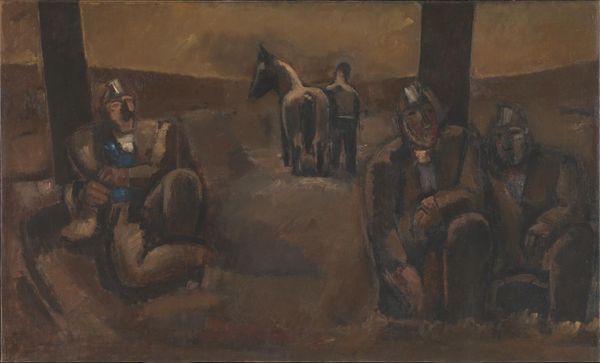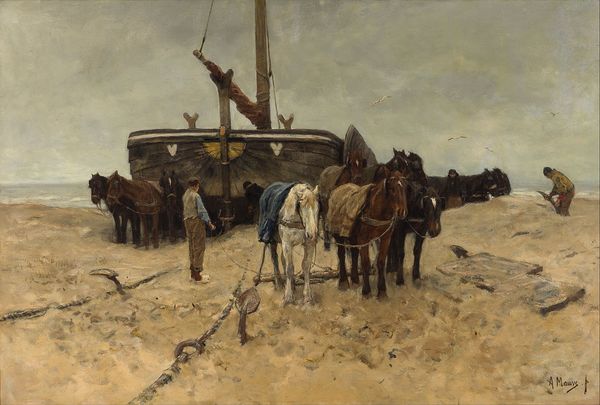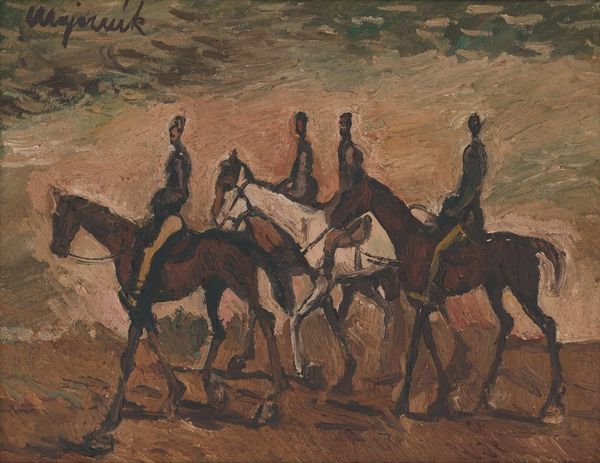
#
abstract painting
#
charcoal drawing
#
possibly oil pastel
#
oil painting
#
acrylic on canvas
#
underpainting
#
painterly
#
painting painterly
#
watercolor
#
expressionist
Copyright: Public domain
Editor: This is Isaac Israels' "Two Donkeys," painted in 1901. It seems to be an oil painting. I'm struck by how muted the colors are. What is your initial impression of the piece? Curator: My eye is drawn immediately to the artist's confident brushstrokes and the painting's planar structure. Note how the composition is largely built on a subtle orchestration of warm and cool tones to denote shadow and volume. Do you observe how the materiality of the paint itself contributes significantly to the work's overall aesthetic impact? Editor: Yes, I see that. The way the brushstrokes build up the form of the donkeys...it’s almost sculptural. The layering creates this lovely texture, particularly in their fur and the saddles. Curator: Precisely. It’s an admirable example of painterly technique. What is your sense of how this technique contributes to the painting’s overall effect? Is it descriptive? Expressive? Both, perhaps? Editor: I'd say expressive, definitely. There's a certain energy that comes through, a feeling of immediacy. It's like Israels captured a fleeting moment. But how much of that effect do you think comes from the composition itself, like the way the donkeys are positioned in relation to each other and the ground? Curator: An interesting point. Certainly, the composition plays a pivotal role. The placement of the donkeys and the positioning of their bodies in space generate the rhythm of shapes that you are calling attention to. This rhythm is intrinsic to the picture’s structural cohesion. By deconstructing its planes, one discerns its geometric essence and underlying pictorial order. Editor: That’s helpful to consider. I was so focused on the emotional effect that I missed the geometric order. Curator: By analyzing color and brushwork through visual analysis, and combining this information with geometric essence of shapes and underlying pictorial order, you gain new perspectives on both affect and form.
Comments
No comments
Be the first to comment and join the conversation on the ultimate creative platform.
